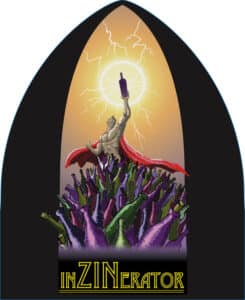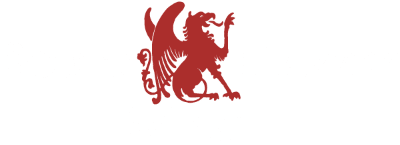Sweden recently banned the wine label “Hello Kitty” due to concerns that it could appeal to children. The Swedish alcohol regulatory authorities took issue with the use of the Hello Kitty character, which is a well-known and beloved cartoon associated with children. Under Swedish law, alcohol marketing is strictly regulated, and any branding or imagery that could be seen as targeting minors is prohibited.
This brought back memories of our wine label, InZinerator, banned in North Carolina. It was our Zinfandel blend. To appeal to a different demographic, we asked our nephew, a comic book collector, and a gamer, to design a wine label that would appeal to his friends. This is one of his first.

Hero on the Mountain
North Carolina believed the label targeted children and refused to approve it. Despite presenting several alternatives, none were accepted. Ultimately, we were instructed to cease submitting for approval. Below are examples of wine labels that have been banned in various countries.
“Smoking Loon” (Sweden)
Reason for Ban: In Sweden, alcohol marketing and labels are tightly regulated to avoid any form of advertising that glamorizes smoking or unhealthy behaviors. The “Smoking Loon” wine label was banned because the name and image were seen to glamorize smoking, a habit strongly discouraged by Swedish health authorities. This was a trendy and successful brand in the U.S. created by Don Sebastiani and Sons.
“Bearded Lady” Wine Label (Australia)
Reason for Ban: In 2013, the Australian Advertising Standards Bureau banned a wine label featuring a character named the “Bearded Lady.” The label was deemed inappropriate for promoting alcohol with an image that could appeal to minors, mainly due to the playful, circus-like theme that might be seen as enticing to younger consumers.
“Fat Bastard” (Canada, Sweden)
Reason for Ban: In Sweden, the wine label “Fat Bastard” was banned because authorities considered the name offensive. Similarly, in Canada, the name was initially rejected for being inappropriate, although it was later allowed in some provinces with changes to how it was marketed.
“Schrader Cellars ‘Old Sparky’ Cabernet Sauvignon” (United States)
Reason for Ban: The TTB initially rejected the “Old Sparky” wine label because it referenced the nickname for the electric chair, which was considered inappropriate and offensive. This wine label was eventually modified to meet regulatory requirements.
“Crazy Bastard” Wine (Finland)
Reason for Ban: In Finland, the label for “Crazy Bastard” wine was banned in 2017 because of the offensive language. Finnish alcohol regulations are strict about using respectful and non-offensive language in the marketing of alcoholic beverages.
These are just a few and there are many more world-wide. Spirits and beer did not escape. A couple of examples of their banned labels are:
- UK banned the rum label “Rude Boy” for promoting irresponsible drinking and behavior. The marketing was seen as glamorizing rebellious and antisocial conduct.
- US banned the beer label, Santa’s Butt” including New York and Maine, because it was considered to appeal to children due to its cartoonish illustration of Santa Claus.

